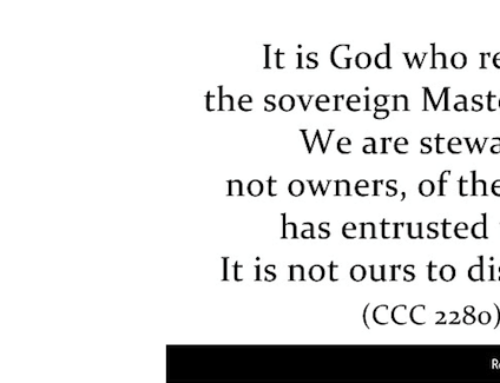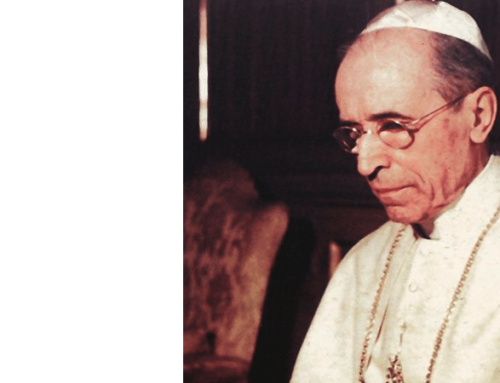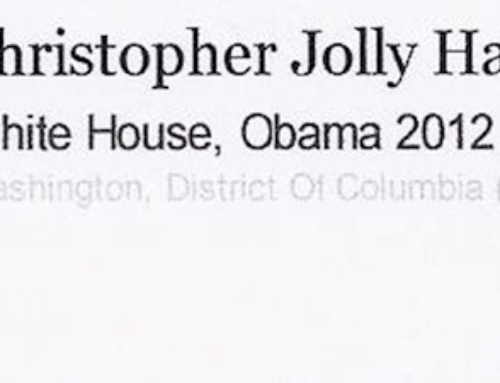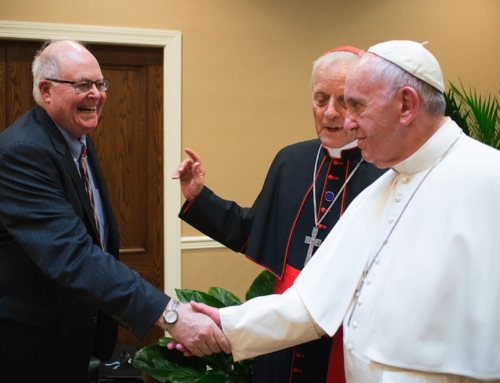by Rebecca R. Messall, Esq.
(Catalyst 7-8/2005)
This article is taken from its fuller version in the fall 2004 issue of Human Life Review, available in its entirety at www.humanlifereview.com.
Everyone knows that the infamous Roe v. Wade opinion legalized abortion, but almost no one knows that legal abortion was a strategy by eugenicists, as early as 1939, to “genetically improve” the population by “reducing” it. In writing his opinion, Roe’s author, Justice Harry A. Blackmun, relied directly and indirectly on the work of these British and American eugenicists. Eugenics is easiest to describe as being the Darwin-based theory behind the Nazis’ plans to “breed” a race of human thoroughbreds. After Hitler, eugenic theorists advocated global control over who has babies, and how many. It has been called “population thinking.” America’s richest families promoted eugenicists and their many social initiatives, including Roe.
One of the clearest links between the eugenics movement and U.S. abortion policy is visible in the American Eugenics Society’s (AES) 1956 membership records, which includes a Planned Parenthood co-founder, Margaret Sanger, and at least two presidents, William Vogt and Alan Guttmacher. The AES had an ugly history of multiple ties to prominent Nazis in Germany. AES members assisted Hitler in crafting the 1933 German sterilization laws. Unbelievably, in 1956— after WWII—the AES membership list included Dr. Otmar Frieherr Von Verschuer, who had supervised the ongoing “science” experiments of Dr. Josef Mengele at Auschwitz.
The AES lobbied successfully for involuntary sterilization laws in the United States, which claimed an estimated 63,000 victims. In 1927, the U.S. Supreme Court upheld those laws in Buck v. Bell,which was cited in Roe. Some states have recently extended official regret and/or apology for those laws.
The Catholic Church was, and is, the nemesis of eugenicists. Politicians in both political parties who position themselves against the Catholic Church and in favor of Roe, align themselves with a host of eugenic strategies and fallout—which include human embryo exploitation (nick-named stem cell research), the trafficking in fetal body parts and euthanasia. They also align themselves with the Rockefeller family dynasty, who funded eugenic scientists decades before Hitler put eugenic theories into practice and who supported many of the leaders of the American Eugenics Society.
The Rockefellers’ support for eugenics began early in the twentieth century, and included support for the Eugenics Record Office. In 1913 John D. Rockefeller, Jr. (“Junior”) incorporated a group, which became a major force in supporting birth control clinics and played a pioneering role in the modern field of population studies.
As early as 1922, the Rockefeller Foundation sent money to fund German eugenics. Of Germany’s 20-plus Kaiser Wilhelm Institute science centers, Rockefeller money built or supported three which “made their mark for medical murder” under the Nazis. One institute was for brain research. During part of Hitler’s rule, it employed Hermann J. Muller, a Rockefeller-funded American socialist and geneticist. It later received “brains in batches of 150-250” derived from Holocaust victims. Another center, the Eugenics Institute, listed its 1935 activities as follows: “the training of SS doctors; racial hygiene training; expert testimony for the Reich Ministry of the Interior on cases of dubious heritage; collecting and classifying skulls from Africa; studies in race crossing; and experimental genetic pathology.”
Junior began funding Margaret Sanger in 1924. Surely he knew of her 1922 book, The Pivot of Civilization. In it Sanger railed against New York’s Archbishop, calling his orthodoxy a “menace to civilization.” Yet she admired Sir Francis Galton, the founder of eugenics, whose ideal she called “the rational breeding of human beings.” She said the Neo-Malthusians considered birth control as “the very pivot of civilization.” She said, “Birth control… is really the greatest and most truly eugenic program.”
When Frederick Osborn became president of the AES in 1946, the AES’ journal, Eugenical News, published a state-by-state report on sterilizations. It also reported on the opposition by Catholic hierarchy, religious and laity. In Alabama: “Whenever sterilization bills are introduced the Catholics descend upon the capital in numbers—priests, nuns and laity—and attack the bill as “against the will of God” and “an attack on the American home.” In Colorado, a 1945 bill failed passage due to “vigorous Catholic opposition.” In Pennsylvania: “The Cardinal’s office in Philadelphia immediately sent a letter to every legislator directing him to oppose the bill, and they were visited by the parish priests in their home communities.”
Frederick Osborn was put in charge of the Population Council, a group organized and funded by John D. Rockefeller III. In 1956, Osborn addressed the British eugenics society. Osborn affirmed his belief in “Galton’s dream” and proposed what he called “voluntary unconscious selection” by changing laws, customs and social expectations. To accomplish this voluntary unconscious selection, he advocated an appeal to the idea of “wanted” children.
In 1968, when many people wrongly believed that the eugenics movement had disappeared, Osborn published a book, The Future of Human Heredity: An Introduction to Eugenics in Modern Society. Osborn asserted that “less intelligent women” could be convinced to reduce their births voluntarily, in order to “further both the social and biological improvement of the population.” He utilized a euphemism for racial minorities by urging that contraception be targeted to people “at the lower economic and educational level.” Osborn recommended disguising the reason for making birth control “equally available.” He said: “Measures for improving the hereditary base of intelligence and character are most likely to be attained under a name other than eugenics.”
Writing his Roe opinion five years after Osborn’s book, Blackmun’s first four introductory paragraphs mention nothing about the newly decreed right of privacy in support of abortion, but he does state: “population growth, pollution, poverty, and racial overtones tend to complicate and not to simplify the problem.” Blackmun directly cited the two men closely connected to the British and the American eugenics societies. Glanville Williams is cited twice. Christopher Tietze is cited three times and Lawrence Lader’s book, Abortion, is cited seven times.
The mystery of Blackmun’s curious opening paragraphs in Roe may be solved by Lader’s book,Abortion, which contains panicked rhetoric such as the following:
“The frightening mathematics of population growth overwhelms piecemeal solutions and timidity. No government, particularly of an underdeveloped nation, can solve a population crisis without combining legalized abortion with a permanent, intensive contraception campaign.”
Glanville Williams (1911- 1997) was a Eugenics Society Fellow in England. Before citing Williams in Roe, Blackmun would have seen Williams’ explicit reference to eugenics:
“Contraception and Eugenics: The problem does not only concern the limits of subsistence, though this in itself is one of sufficient magnitude. There is, in addition, the problem of eugenic quality. We now have a large body of evidence that, since industrialization, the upper stratum of society fails to replace itself, while the population as a whole is increased by excess births among the lower and uneducated classes.”
Before Roe, Ireland’s future cardinal, Cahal B. Daly, had exposed Williams’ anti-Catholic rhetoric:
“Examples of the technique occur on every alternate page…Christian moral teaching is ‘reactionary,’ ‘old-fashioned,’ ‘unimaginative,’ ‘primitive if not blasphemous,’ ‘restrictive,’ ‘irrational,’ ‘out-moded,’ ‘dogmatic,’ ‘doctrinaire,’ ‘authoritarian.’
“Contrasted with it are ‘enlightened opinion,’ ‘interesting medico-social experimentation,’ ‘progressive statutes,’ ’empirical, imaginative humanitarianism.'”
Blackmun acknowledged the Catholic scientific view that life begins at the moment of conception, but thereafter Blackmun relied on books and articles espousing the science of eugenics. In fact, one book contains a subheading titled, “The New Eugenics,” and cites two men who can be described as maniacal eugenicists who were seemingly paranoid about a deteriorating human heredity. Blackmun cited an article, “The New Biology and the Future of Man”, which speaks for itself:
“Taken together, [artificial gestation, genetic engineering, suspended animation]…they constitute a new phase in human life in which man takes over deliberate control of his own evolution… There is a qualitative change to progress when man learns to create himself…a reworking of values is required…Submission to supernatural power is not adaptive to a world in which man himself controls even his own biological future…What counts is awareness of the unmistakable new fact that in general new biology is handing over to us the wheel with which to steer directly the future evolution of man.”
In March 1973, two months after Roe was handed down, Osborn’s American Eugenics Society changed its name to the Society for the Study of Social Biology. The announcement said: “The change of name of the Society does not coincide with any change of its interests or policies.” The group had already changed the name of its journal in 1968 from Eugenics Quarterly, to Social Biology. Commenting on the new title, Osborn remarked: “The name was changed because it became evident that changes of a eugenic nature would be made for reasons other than eugenics, and that tying a eugenic label on them would more often hinder than help their adoption. Birth control and abortion are turning out to be great eugenic advances of our time. If they had been advanced for eugenic reasons it would have retarded or stopped their acceptance.”
This, then, is the ideological basis of the abortion industry.








